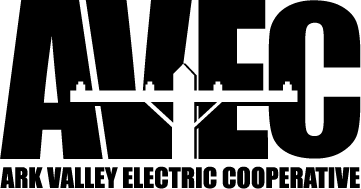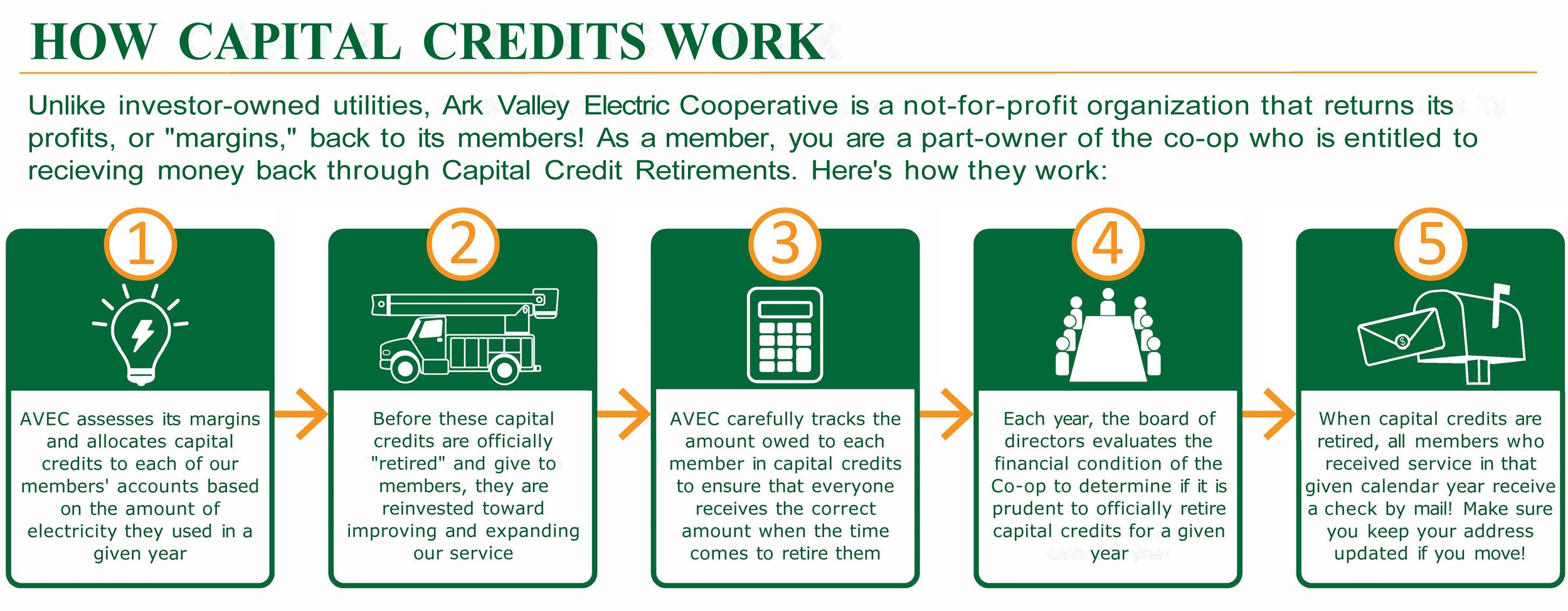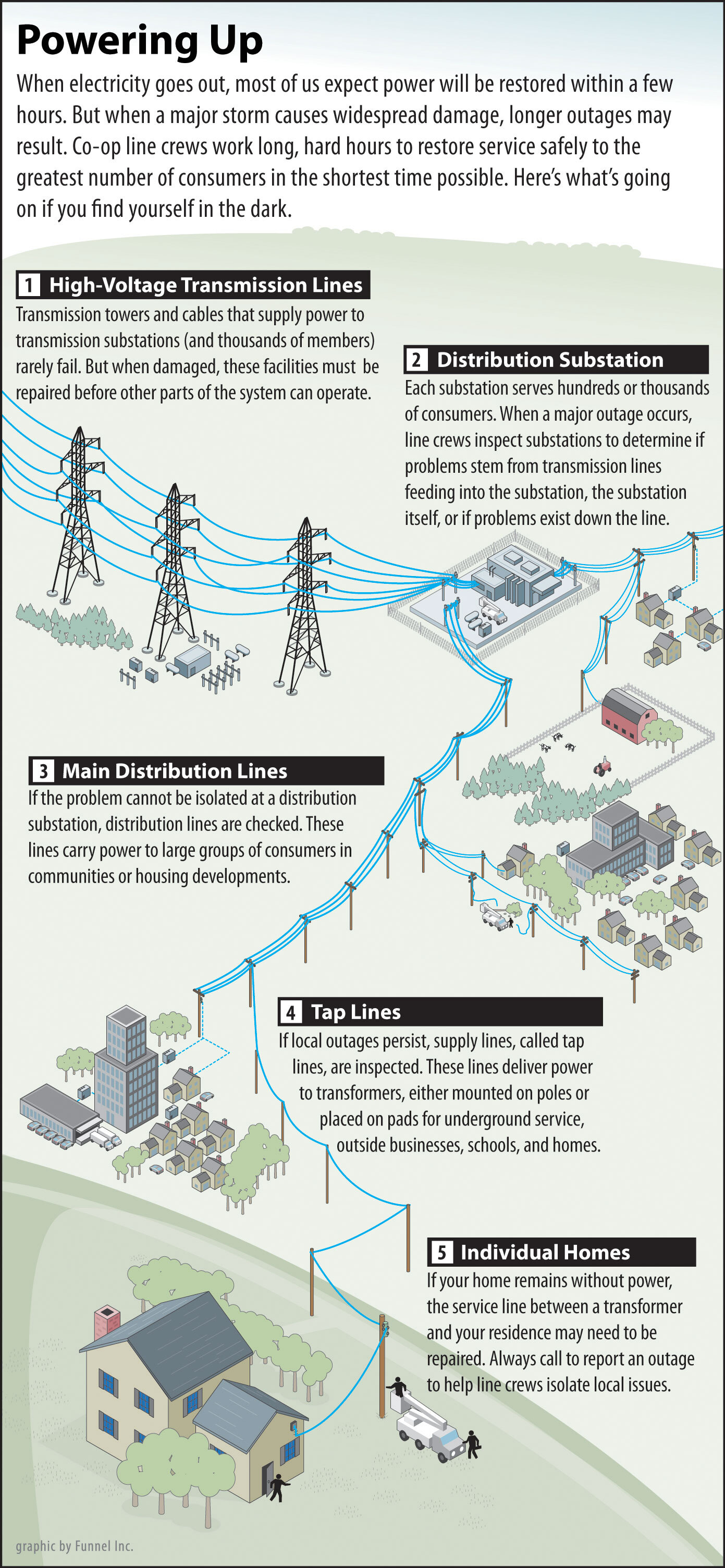Frequently asked questions
What are Capital Credits?
What is ECA?
ECA stands for energy cost adjustment and you see this on your bill each month. Ark Valley buys wholesale power from Kansas Electric Power Cooperative (KEPCo). The energy cost adjustment varies each month depending on the varying cost of power we purchased from KEPCo. The base rate of 6.913 cents/kWh is already included in your monthly bill.
So when the cost of wholesale power increases above the base rate, the difference is passed on to the member through the ECA charge. On the other hand, when the cost of wholesale power is below the base rate, the difference is passed on to the member through an ECA credit. Calculating the ECA charge each month allows Ark Valley to keep rates consistent rather than changing them whenever we see a cost of energy fluctuation.
What's on that pole?
How is power restored after a storm?
rate and billing FAQs
Why are the rates changing?
Several months ago, a consultant was engaged to perform a cost-of-service/rate study for Ark Valley to determine whether existing rates are sufficient to enable the cooperative to provide quality service to consumer-members, while meeting our financial obligations to our lenders. The results of the study indicated that there is no need to increase our revenue, but rate changes were recommended that will more accurately reflect the cost of serving each rate class. The proposed changes are designed to leave Ark Valley Electric’s total revenue unchanged. However, the study showed that the single phase rate is being subsidized by the other rates, so an increase of 3% is warranted, while other rates will see a decrease.
Who decides when rates change?
Ark Valley’s Board of Trustees sets the cooperative rates. The trustees are members who pay the same rates as you. They are elected by you and other members each year. It is their responsibility to ensure electric rates are adequate to maintain the health of the cooperative and to provide the necessary revenue for delivery of reliable electric service. The trustees want to avoid rate increases for all members, but also want to collect revenue fairly and equitably to ensure the long-term financial stability of the cooperative.
When will the new rate design take effect?
It will go into effect beginning October 1, 2023, after the summer season has passed.
What is the basic service charge?
A portion of the cooperative’s costs are the same for all customers, regardless of the kWh’s used. The basic service charge is designed to recover those costs that do not vary with the amount of energy used. The cooperative has made similar investments in the electrical system, metering, billing, service maintenance and administrative services associated with supplying power, whether they use 50 or 1,000 kWh per month. Increasing the fixed charges closer to the actual costs helps to track the cost of providing electric service more accurately.
Why does the basic service charge need to be increased?
It needs to be increased to come closer to covering the current fixed costs to serve each meter. The study indicated that the actual cost to serve each single-phase meter is about $62.
The increase would help Ark Valley achieve rate equity among ratepayers. If one member uses only 1 kWh of electricity and another uses 1,000 kWh, Ark Valley incurs the same cost to build the line, maintain the distribution system and deliver electricity. It takes just as much equipment to deliver 1 kWh as it does 1,000 kWh of energy.
Is the energy rate decreasing?
Yes, due to the increase in the basic service charge, the energy charge is being reduced. For the single phase and water source heat pump rate the energy charge will be reduced significantly to $.07775 and $.07140 per kilowatt hour year round, respectively, with the exception of the summer peak period. The energy charge for the three hour peak period (3:00 p.m. to 6:00 p.m.) in June through September would be $.34252 for single phase and $.31822 for water source heat pump rate. The kilowatt hour rate is significantly higher during the peak period in order to more closely reflect the actual costs for the Cooperative during that time frame.
What is electric demand?
Electric demand refers to the maximum amount of electrical power that is being consumed at a given time, as opposed to energy, which is the amount of power used over a period of time. Using multiple appliances at the same time increases your demand.
Where can I see my demand measurement?
It can be found on your bill and has been printed on your bill since 2018.
Why is there a demand charge on my bill?
The rate structure lets you have more control over your bill by choosing when you use your power. By limiting electric usage during the peak period, members can control their costs. The rate is designed to help you and the cooperative manage our peak load by giving you the ability to shift some of your electric usage away from the most expensive times of the day.
How much is the demand charge?
For the single-phase and water source heat pumps rates the demand charges will be $3.00 year round for the highest measured demand during each billing period. The highest demand you require in any one-hour time period in your monthly billing cycle will determine your charge.
What is peak demand?
Peak demand is your highest hourly cumulative usage during any hour that coincides with the peak demand period. For the single-phase and water source heat pump rates there would no longer be a peak demand charge, but instead the energy charge would be quite a bit higher during the summer peak period.
When are the peak demand hours in the summer?
Peak hours occur during the weekdays in June through September from 3:00 p.m. to 6:00 p.m. There are no peak charges on weekends, Independence Day or Labor Day.
What can I do to lower my electric bill?
This rate design gives members a way to control their costs by making small changes in household activities. Operating major appliances like your dishwasher, oven, washer and dryer outside of these peak periods would help to lower the peak charges during the summer months. Do laundry and other chores that require significant amounts of electricity mid-day, later in the evening, or on weekends.
Members can also reduce their demand costs by spreading out the use of major appliances rather than running them at the same time.
Why will increases for some members be different than the notice amount?
The official notice amount is a simple average for the full consumer-member base. If your usage is more or less than average, your price adjustment may vary.
When can we expect the next rate increase?
Lots of things come into play that can affect rates. Many of these are unplanned and can be tied to the rising transportation costs for coal, escalating natural gas prices, storm damage and stricter environmental compliance requirements such as a carbon tax. We promise to do our best to minimize the impacts of these issues by being proactive in our planning and focusing on maintaining the reliability, quality, and integrity of our systems.



